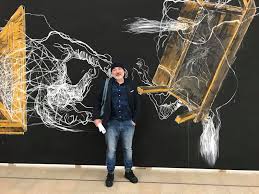Once again
JAY MAISEL – MASTER OF STREET SHOOTING, COLOR AND LIGHT
 A New Yorker and passionate fan of the Big Apple, Jay Maisel (© Jay Maisel) is one of the world’s leading street-style photographers. Among professionals, he enjoys the fame of a leading specialist in the use of color and lighting. The photographer’s unique ability to work with the finest transitions of shades, to reveal the potential of gestures and poses brought him success. This is one of the most “prolific” American authors, who has been shooting for covers of famous magazines and music albums, commercial campaigns, as well as for self-realization for about 50 years.
A New Yorker and passionate fan of the Big Apple, Jay Maisel (© Jay Maisel) is one of the world’s leading street-style photographers. Among professionals, he enjoys the fame of a leading specialist in the use of color and lighting. The photographer’s unique ability to work with the finest transitions of shades, to reveal the potential of gestures and poses brought him success. This is one of the most “prolific” American authors, who has been shooting for covers of famous magazines and music albums, commercial campaigns, as well as for self-realization for about 50 years.
Maisel is the winner of awards from the American Society of Photographers for the Media, the International Center for Photography and other influential organizations. His portfolio includes photos of Marilyn Monroe and a photo for Miles Davis’s Kind of Blue album (this is the best-selling jazz album on the planet). Continue reading
REVERSE RINGS FOR MACRO OR CONTINUE TO STUDY MACROPHOTOGRAPHY
 Professional photographer Andrew Gibson (© Andrew S. Gibson) talks about a method that allows you to get to an object very, very close – through the use of reversible rings.
Professional photographer Andrew Gibson (© Andrew S. Gibson) talks about a method that allows you to get to an object very, very close – through the use of reversible rings.
Reversible rings for macro
If you already have a lens with a focal length of 50 mm or a whale lens (usually lenses with focal lengths of 18-55 mm), then acquiring a reversing ring will also be the most inexpensive way to get macro equipment and join the macro culture completely armed.
The method involves working with a lens inverted backwards, so that the front element looks at the camera, and the rear – at the subject. To do this, you need to buy a special adapter – a reversing ring, which allows you to mount an inverted lens either to the camera or to another lens. Continue reading
SIX FUNDAMENTAL MACRO PRINCIPLES
 Macro photography is sometimes mistakenly called “close-up photography” in photography. This statement cannot be considered fundamentally false, but if you use it, then very many may consider you an amateur. In the classical sense, macro photography is called shooting at a scale of 1: 2 – 20: 1 (that is, 1 centimeter of the image on the photosensitive material of the camera corresponds to 2-0.05 centimeters of the object). As a rule, macro subjects are very small – most often they are insects or flowers.
Macro photography is sometimes mistakenly called “close-up photography” in photography. This statement cannot be considered fundamentally false, but if you use it, then very many may consider you an amateur. In the classical sense, macro photography is called shooting at a scale of 1: 2 – 20: 1 (that is, 1 centimeter of the image on the photosensitive material of the camera corresponds to 2-0.05 centimeters of the object). As a rule, macro subjects are very small – most often they are insects or flowers.
Larger objects can also be interesting for macro shots if, for example, a photographer wants to focus on some very specific, smaller details of a large object. Continue reading




